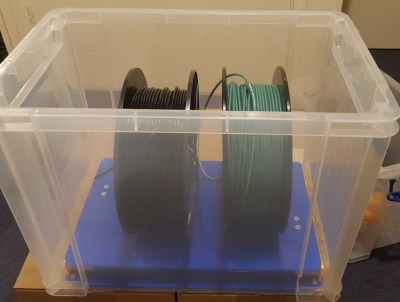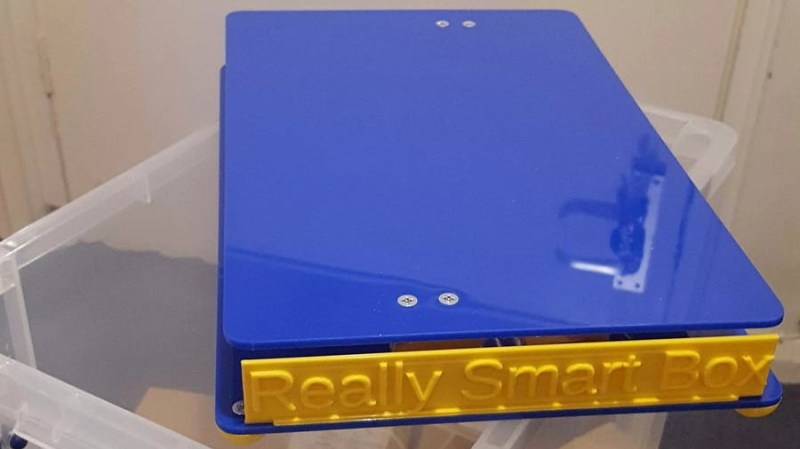[Stephen Harrison]’s Really Smart Box is a great concept, it’s simultaneously a simple idea while at the same time being super clever. The Really Smart Box isn’t really a box; it’s a drop-in platform that can be made any size, intended to turn any dumb storage box into one that helps manage and track levels and usage of any sort of stock or consumable.
 It does this by measuring the weight of the stuff piled on top of it, while also monitoring temperature and humidity. The platform communicates this information wirelessly to a back end, allowing decisions to be made about stock levels, usage, and monitoring of storage conditions. It’s clearly best applied to consumables or other stock that comes and goes. The Really Smart Box platform is battery-powered, but spends most of its time asleep to maximize battery life. The prototype uses the SigFox IoT framework for the wireless data, which we have seen before in a wireless swimming pool monitor.
It does this by measuring the weight of the stuff piled on top of it, while also monitoring temperature and humidity. The platform communicates this information wirelessly to a back end, allowing decisions to be made about stock levels, usage, and monitoring of storage conditions. It’s clearly best applied to consumables or other stock that comes and goes. The Really Smart Box platform is battery-powered, but spends most of its time asleep to maximize battery life. The prototype uses the SigFox IoT framework for the wireless data, which we have seen before in a wireless swimming pool monitor.
This is still just a prototype and there are bugs to iron out, but it works and [Stephen] intends to set-and-forget the prototype into the Cambridge Makespace with the task of storing and monitoring 3D printer filament. A brief demo video is embedded below.















son of a b—….. I just spent the last two days building this with postal scales and a raspi zero w for measuring the weight of kegs in a kegerator.
So how does this one handle zeroing? Mine zeros on boot, which is not perfect.
Well that’s easy to work around… just take the beer out while you boot it :-D
Though yah, that is some PITA.
yeah that was the plan I came up with. Boot it, then shove the scales in.
I wonder how stable these cheap load cells are over long time. I.e. will the reading creep slowly?
Yeah it seems to creep, but it’s not bad enough for my use. I’m measuring over half of the scales range, so it would have to be off by more than 10% to be of any issue.
Also I just noticed that I use different computers at different times of day, and all have a different name here, so following anything I say is going to be confusing. Good luck, chumps!
You’ll probably do best using short-term delta measurements and attempting to ignore creep that way.
Have the MCU (or pi) keep track of the total weight and/or zero but don’t let that change slowly. Only allow the tracked total change in large enough (say 10g/min or more) rates that creep can be ignored. Thus so long as you have it on when you put the keg in, and have it on when you pour any beer you should be ok.